
Topics
Guests
- Thomas DrakeNational Security Agency whistleblower. He’s the winner of the 2011 Ridenhour Prize for Truth-Telling and co-recipient of the Sam Adams Associates for Integrity in Intelligence award.
- Jesselyn Radacka former ethics adviser to the United States Department of Justice. She is currently the director of National Security & Human Rights at the Government Accountability Project, the nation’s leading whistleblower organization. Her new book is called TRAITOR: The Whistleblower and the “American Taliban”.
Links
- Watch Part 1 of this interview, "NSA Whistleblower Thomas Drake Prevails Against Charges in Unprecedented Obama Admin Crackdown"
- Watch an additional excerpt from Part 2 of this interview, "Part 2: Thomas Drake and Jesselyn Radack on Obama Administration Cra
- Government Accountability Project
- “TRAITOR: The Whistleblower and the "American Taliban.”
- Inside Obama’s "Orwellian World" Where Whistleblowing Has Become Espionage: The Case of Thomas Drake
- Follow Save Thomas Drake on Twitter: @savetomdrake
- Follow Jesselyn Radack on Twitter: @JesselynRadack
We continue our conversation with Thomas Drake, who was prosecuted by the Obama administration after challenging mismanagement, waste and possible constitutional violations at the National Security Administration. “I’m the first to acknowledge that there are secrets that must be protected. But not when it comes to government wrongdoing and illegalities and when in fact they’re endangering the safety of our own country,” Drake says. Former Justice Dept. spokesperson Matthew Miller now says the case may have been an “ill-considered choice for prosecution.” Drake faced 35 years in jail, and his case ended last year in a misdemeanor plea deal. We also speak with Jesselyn Radack, Thomas Drake’s lawyer and a whistleblower herself. She is currently the director of National Security & Human Rights at the Government Accountability Project, the nation’s leading whistleblower organization. Radack has written a new book called ”TRAITOR: The Whistleblower and the 'American Taliban.'” We also discuss the case of Jeffrey Sterling, a former CIA officer who also has been charged under the Espionage Act, allegedly for providing details about the CIA’s covert spy war with Iran that formed a chapter in James Risen’s book, “State of War: The Secret History of the CIA and the Bush Administration.” [includes rush transcript]
Transcript
AMY GOODMAN: We turn now to whistleblowers and the unprecedented attack they’ve come under during the Obama administration. Invoking the Espionage Act of 1917, the administration has pressed criminal charges against no fewer than six government employees, more than all previous administrations combined. Last week, we spoke to one of the country’s most well-known whistleblowers, Thomas Drake, who was targeted after challenging mismanagement, waste and possible constitutional violations at the National Security Agency, that top-secret agency that is a number of times larger than the CIA. He was one of several sources for a Baltimore Sun article about a $1.2 billion NSA experimental program called Trailblazer, to sift through electronic communications for national security threats. As a result, he faced up to 35 years in prison for charges under the Espionage Act, but he was never actually accused of spying. The case ended the last year in a misdemeanor plea deal.
Today we air part two of our discussion with Thomas Drake and his attorney, Jesselyn Radack, a former ethics adviser to the Department of Justice, currently director of National Security & Human Rights at the Government Accountability Project, the nation’s leading whistleblower organization. Her new book is called TRAITOR: The Whistleblower and the “American Taliban”. I did the interview along with Democracy Now!'s Nermeen Shaikh last week and began by asking Jesselyn Radack to talk about whistleblowers today and what's happening to them under the Obama administration.
JESSELYN RADACK: Yes. In fact, he said that whistleblowers were courageous and patriotic, yet he has led an unprecedented war on whistleblowers. And while whistleblowers have always been retaliated against and harassed unmercifully under prior administrations, this is the first administration to actually start indicting them and doing so under the heavy-handed Espionage Act, which could land them in jail for the rest of their lives. There are six such prosecutions going on right now of people who revealed information that exposed fraud, waste, abuse, illegality and a danger to public health and safety. Tom Drake was the first person among that recent spate of crackdown prosecutions.
AMY GOODMAN: And in a nutshell, Thomas Drake, though we spoke on _Democracy Now! _about your case, explain what happened, what you did, how you became a whistleblower, and what happened to you.
THOMAS DRAKE: Well, under the Intelligence Community Whistleblower Protection Act, I actually originally had made contact with congressional staffers during the late '90s, interestingly enough, regarding NSA's massive fraud, waste and abuse on certain—on contracts. They were in fundamental violation of Federal Acquisition Regulation. So there had already been, in essence, a pre-existing means by which I was informing Congress regarding what was going on at NSA.
In 2001, though, after 9/11 is when I found out that NSA was in abject violation of, you know, the First Commandment at NSA, which was, you do not spy on Americans without a warrant. And that’s, as James Bamford had pointed out earlier in your segment on Democracy Now!, is because of significant abuse during the ’60s and ’70s under the programs that he mentioned, as well as a number of others—COINTELPRO—where they were actually in violation—without even FISA, but they were in violation of the Fourth Amendment rights of Americans. So, political dissidents, journalists who were not liked by administrations, peace activists, antiwar activists were being spied upon on a routine basis by the intelligence agencies, including NSA, within the United States of America. That led to a whole series of hearings. You know, you had the Watergate, of course. You had, basically, in the Nixon administration: president is above the law, whatever the president says is legal. Never would I have imagined that that would have come full flower post-9/11, and in fact makes the Nixon administration and that whole era look like pikers.
And so, I ended up finding, as I am—because of where I was, I had people coming to me privately with significant concerns about: “What are we doing, Tom, spying on Americans? I thought there was a legal regime that we were supposed to follow. We have a court that we go to in secret, you know, with the probable cause evidence. Yet now we’re just—we’re tossing it overboard, and we’re treating our own country, OK, as the equivalent of a foreign nation for the purpose of dragnet electronic surveillance.” And so, you had that combined with a massive infusion of billions and billions of dollars. Basically, Congress was writing blank checks to NSA. I mean, in fact, I remember being in meetings where they would say, you know, “How big do you want it? And how soon do you want it?” They were just going to write the check. This is even stuff that was well off the program for the record, supplemental funding, significant redistribution of wealth going right into the pockets of many of the defense contractors—the very thing that Eisenhower had warned us about during his farewell address.
So I became a part of a Department of Defense inspector general audit investigation. I was one of the unnamed—I was the unnamed senior official in a hotline complaint that was given to the DODIG in September 2002, signed by Diane Roark, Ed Loomis, Kirk Wiebe and Bill Binney, pointing out the vast waste and fraud being committed by the program called Trailblazer, which at the time was under Hayden’s direction and had become the flagship program for how NSA was going to meet the demands and the challenges of the digital age.
AMY GOODMAN: Thomas Drake, can you talk about what happened to your life as you blew the whistle on fraud, mismanagement, and the—what you considered the evisceration of the First Amendment, the spying on American citizens?
THOMAS DRAKE: My life was turned upside down, both personally and professionally. I can’t even describe—I even had, you know, close colleagues and friends who listened to me in horror as to what I went through during the course of the last number of years.
AMY GOODMAN: How many years did you—
THOMAS DRAKE: Well, from the point—if you remember, there was this massive, multi-year, multi-million-dollar criminal national security investigation that was launched in late December of 2005 as a result of the Risen and Lichtblau article. And so, they went, with extreme vengeance, looking for whoever leaked or was the source for that article.
AMY GOODMAN: They’re, by the way, still being investigated, right?
THOMAS DRAKE: Well, James Risen, in particular, is part of the Jeffrey Sterling case. Interestingly enough, the lead prosecutor for that case is the same one that led the prosecution in my case, William Welsh. Well, in terms of my life being turned upside down, when they launched that multi-year, multi-million-dollar investigation, there was concern because that article had caused quite a stir within the intelligence community and, in particular, NSA, and had people within NSA say, “My gosh, what are we doing?” But this investigation, which, as it turns out, involved five full-time prosecutors and 25 full-time agents—I ultimately was caught up in that investigation. One of the great concerns is that because there was a very limited number of people who knew about the program, referenced in that—the name of that program was referenced in James Bamford’s Wired Magazine article.
AMY GOODMAN: Called?
THOMAS DRAKE: Stellar Wind. Very few people knew about that program. It was only whispered in the halls of NSA. It was super top-secret program. It was one that was not mentioned at all, even in the—within NSA. It was that sensitive. And so, the number of people that were actually read into that program, the number of people that were associated with that program, were quite small. What started happening, though, in the short weeks right after 9/11, and particularly from—for the first week in October, when I actually found out about this program being approved by the White House and NSA becoming the executive agent for the program, and that it all was legal and not to pursue this anymore, I was really warned about not to ask any more questions.
AMY GOODMAN: And explain what Stellar Wind was, is.
THOMAS DRAKE: Well, Stellar Wind was this dragnet electronic surveillance program that went—it exponentially grew by leaps and bounds. In fact, when the PATRIOT Act was passed in October in Congress, NSA was already in violation of the PATRIOT Act. So, we’re talking about—I mean, remember, the exclusive means—it’s really critical to note that the exclusive means by which electronic surveillance could take place against U.S. persons, which is resident aliens, U.S. corporations and U.S. citizens—the exclusive means by which you would conduct that activity had to be done under the auspices of FISA. And so—and it had to be with a warrant, although there were certain conditions where you could do hot pursuit and other, but those were time-limited and time-constrained. FISA was the exclusive means.
If you violated FISA, there were criminal sanctions. We’re talking thousands and thousands of dollars and many years—for each incident. What NSA chose to do, in concert with the White House and White House approval, was to simply upend that legal regime, which in itself was a compromise hammered out under the Carter administration based on all the previous abuses that had ensued in the previous two decades, and so tossing out 23 years, under the excuse of 9/11, giving NSA essentially blanket access to all available electronic records both, you know—anywhere they could find it.
What I would hear internally is that “We just need to get the data. We don’t know where the threat is. We don’t know where they may be hiding. There could be secret cells. Hey, and if it means bypassing the rights of Americans, so be it, because what’s most important is security of the country. Who cares about our liberties? They’ll just have to take a back seat for now.” I remember actually saying, “If that’s so, then why don’t we change the law?” There’s a legal means by which you change a law in this country. And that means is through Congress. And if the law wasn’t working before, you can modify the law. And in fact, FISA had been modified five times since 1978. So here’s a chance to—
AMY GOODMAN: Foreign Intelligence Surveillance Act.
THOMAS DRAKE: The Foreign Intelligence Surveillance Act, with a secret court, and there’s also an appeals court, all housed in the Department of Justice. So, I asked that question. I asked that question to the most senior people at NSA. And I was told, “Congress will say no. Congress will say no.” Why would they say no? 9/11 just happened, and Hayden is going on about wanting to make—you know, “We’ve got to make Americans feel safe again,” which was one of his other mantras. And yet, they entered into this secret arrangement, first week in October, a presidential executive order authorizing the NSA to treat the United States of America as the equivalent of a foreign nation for the purpose of electronic surveillance. And I knew when I had that conversation, after Maureen Baginski had told me in writing that they had gone with a different solution, although she did not mention the actual name of the program, Stellar—
AMY GOODMAN: Top person at the NSA, Maureen—
THOMAS DRAKE: The third—she was the signals intelligence director at the time. She was also my immediate supervisor. She demurred. And when I—you know, I had—that was that moment. That was the moment that I knew that NSA crossed its Rubicon. It was the moment that the surveillance horse was out of the barn, when it was made very clear to me, very—it was explicitly clear to me, by the Office of General Counsel, that this program was authorized by the White House, NSA was the executive agent for this program. It was authorized by the White House, and it was all legal, and do not pursue this any further.
NERMEEN SHAIKH: And as far as you know, it’s still underway.
THOMAS DRAKE: Yes.
NERMEEN SHAIKH: It’s still going on, Stellar Wind.
THOMAS DRAKE: Now, if you follow the legislative trail, and this is where Jesselyn Radack is probably in a better position to answer than I am in terms of the illegal implications, a compliant Congress, because, you know, there’s—this is another dynamic here. We had a very compliant Congress with regards to national security, and, of course, vast streams of money being pumped into the community at the same time. I mean, NSA’s budget was essentially doubled within 12 to 18 months. So, you have a compliant Congress, began after the revelation of the so-called warrantless wiretapping program in that New York Times article, Risen and Lichtblau—you ended up having legislation sponsored by the executive branch and being passed by Congress to essentially make what had been illegal legal. So you had the PATRIOT Act renewal. You had—there was a Protect America Act. You ended up having the FISA Amendments Act in 2008. The immunity was granted to the telecommunity concerns, because the Stellar Wind program fundamentally involved the most major of our telecommunications companies within the United States.
AMY GOODMAN: For quite a time now, Senators Wyden as well as Udall—Wyden from Oregon, Udall from Colorado—have been raising questions about the USA PATRIOT Act. They have said Americans would be stunned to know what the government thought the PATRIOT Act was allowed to do. They made their remarks in a letter to Attorney General Eric Holder. They seemed constrained, that they can’t actually say what they know. Jesselyn Radack, have you met with them? What is it that they are warning?
JESSELYN RADACK: Well, we have met with them, and we have briefed them, including Bill Binney and Kirk Wiebe, who were—
AMY GOODMAN: And they are?
JESSELYN RADACK: —in James Bamford’s article. They were whistleblowers along with Tom Drake—
AMY GOODMAN: At the NSA.
JESSELYN RADACK: —at the NSA. And with their informed speculation of what some of these secret interpretations of 215 might be. I do think Udall and Wyden are signaling very strongly—I mean, here they are. This is where we need a whistleblower. And yet, we’ve seen what happens, in terms of Tom Drake being—trying to be prosecuted and the others all being targets of a federal criminal investigation. And yet, here they are again coming forward in Wired Magazine and on your show today. And America owes them a huge debt of gratitude. But we need more people to come forward. More people—a lot of people know what Wyden and Udall are talking about and are not saying.
AMY GOODMAN: What is it that they’re talking about?
JESSELYN RADACK: I’ll let Tom—
THOMAS DRAKE: It’s pretty clear.
JESSELYN RADACK: —elaborate.
THOMAS DRAKE: I mean, Section 215, the secret interpretation—this is my informed interpretation of the secret interpretation—basically grants the government access to all business records, subscriber information, phone records. So any—under the Section 215, the cover of Section 215, gives the government access, for the purposes of national security, blanket access to all those records. So, in essence, those companies are essentially forced, under the rubric and the rules of national security and monitoring and looking for threats, we need you to give us access and/or turn over your records.
NERMEEN SHAIKH: What was the justification for that? Why businesses?
THOMAS DRAKE: Why businesses? Because there’s a tremendous amount of personal information, private information, that is held by businesses. You think about our lives of today in the digital age, you know, you name it. You name your phone records. You name your internet providers. You name all the banks, any business that would hold information about individuals.
AMY GOODMAN: And libraries and bookstores?
THOMAS DRAKE: Libraries and bookstores. Any and all electronic transactions. The crucial and sinister thing about all this is when you have this very large data center being built in Utah. And that’s been in progress for some time. And one of the things I heard many, many years ago was “We need a place to store it all, Tom. We’re just running out of room.” In fact, one of the things that was—it was kind of funny, is they were just strapping on, you know, hard drives and disk drives wherever they could find them, because they were simply running out of room to store the—it was never a problem—this is what’s interesting. It was never a problem with collecting the data. The problem is the amount of data now being collected. And NSA essentially wanting it all, just so they don’t miss anything, is vast—vastly larger than the amount of data they used to deal with in kind of the Cold War scenario. They were not structured, in terms of operations or the technology, to deal with this type of information. I mean, you’re talking at the yottabyte level, which, you know, is geek speak, which is orders of magnitude, you know, higher than what you—you hear about megabytes and gigabytes and terabytes. You know, we’re now—you know, petabytes. This goes well beyond that.
AMY GOODMAN: Yottabytes and petabytes.
THOMAS DRAKE: Yottabytes, yes. It’s basically a way to measure the amount of data, digital data.
AMY GOODMAN: And this is the data center, one of the largest in the world—
THOMAS DRAKE: Yeah.
AMY GOODMAN: —that’s being built in Bluffdale, Utah.
THOMAS DRAKE: But the tech—now what’s happened, the price—you know, it’s gotten down to the point—a terabyte of information, which is an extraordinary—you know, we’re talking a thousand—a thousand gigabytes. Many home computers now, you know, it’s not uncommon to have a 500-gig hard drive or even a multi-terabyte hard drive. You can put a terabyte now on just one portion of a flash drive, one terabyte of information. So you can imagine the kind of scale that’s involved with this data center, what can actually be stored. Now, what can you do with all that data?
NERMEEN SHAIKH: Well, that’s what I was going to ask.
THOMAS DRAKE: What can you do with all that data?
NERMEEN SHAIKH: I mean, what’s the point of all—who’s going to go through all of that?
THOMAS DRAKE: Well, you know, as James Bamford mentioned, it sort of becomes NSA’s cloud. Remember, they have all this data there, very high-speed networks that connect it with other centers and other analytic places. They can access that to figure out, you know, and data mine through all that to figure out what’s going on. But it’s a very—but think about what else is possible and what else is actual. If you have that much data on that many people, the ability to be able to target anybody at any time, anywhere, now raises the specter, the Orwellian specter, of what can they do in the assembling information, the vast amounts of information, on any one person or persons.
AMY GOODMAN: The Jeffrey Sterling case, Jesselyn Radack, explain that case.
JESSELYN RADACK: Sure. Jeffrey Sterling is a former CIA officer who has also been charged under the Espionage Act, allegedly for providing information that formed a chapter in James Risen’s 2006 book, State of War. Now, here we are in 2012, again, a years-long delay, and in this case, they have taken the step that they didn’t in Tom’s, where they are going after the reporter. Twice under Bush, James Risen, one of the reporters who had broken the warrantless wiretapping story, was subpoenaed. And then Bush subpoenaed him for a third time. Interestingly, Risen provided an affidavit saying that he learned, from people who had appeared before the grand jury, that people—that they had—the government had obtained records of his conversations with sources, which is so dangerous. In terms of Sterling himself and what he actually did, what he allegedly revealed was that we gave Iran nuclear Information, but it was a ruse. It had a defect in it. But it turns out, in fact, the defect in the nuclear design information was so obvious that the Iranians detected it immediately, and we ended up turning over actually legitimate nuclear information. Now, that is surely of public interest, as—
AMY GOODMAN: Wait, you have to repeat this.
JESSELYN RADACK: OK.
AMY GOODMAN: About the U.S. giving nuclear weapons intelligence to the Iranians.
JESSELYN RADACK: Yes. That was a ruse. They were going to give that information, but put in a design flaw so it would be like giving false information. But the design flaw was so obvious that the Iranians detected it, and in the process, we actually ended up turning over legitimate nuclear design information.
AMY GOODMAN: And when was this?
JESSELYN RADACK: This was back in two thousand—well, Risen wrote about it in 2006. It was part—
AMY GOODMAN: During the Bush years.
JESSELYN RADACK: Yes. And it was part of a program called MERLIN. Now, clearly, as we march off to war with Iran right now, the way we did with Iraq, clearly it’s in the public interest to know if the U.S. accidentally, in a botched program, provided the Iranians with nuclear information. That is something that is legitimate whistleblowing. Whether Sterling calls it whistleblowing or not, it fits the legal definition of whistleblowing. You know, I don’t know if Sterling did this or not. These are allegations. But even if he did what they say he did, it revealed a violation of abuse, waste of money, and a big mistake.
AMY GOODMAN: Jesselyn Radack, Thomas Drake’s lawyer, she’s with the Government Accountability Project. She’s a whistleblower herself. She has written a new book called TRAITOR: The Whistleblower and the “American Taliban.” Thomas Drake is a National Security Agency whistleblower who was prosecuted by the Obama administration after challenging mismanagement, waste and possible constitutional violations at the NSA. Former Justice Department spokesperson Matthew Miller now says the case may have been a, quote, “ill-considered choice for prosecution.” Drake faced 35 years in jail. The case ended last year in a misdemeanor plea deal. And that does it for today’s broadcast. If you’d like to see the first part of that conversation, you can go to our website at democracynow.org.


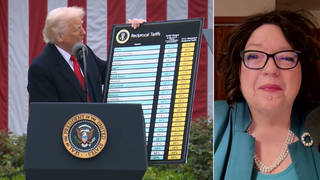
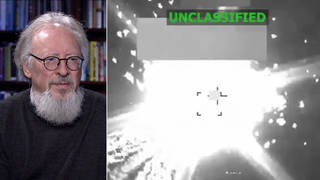
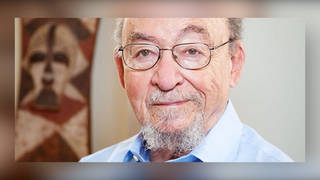





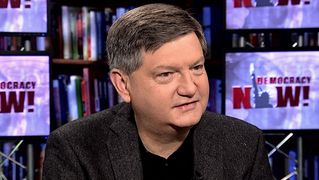
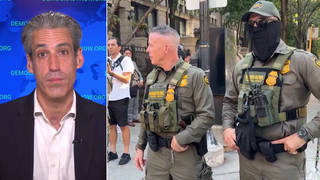
Media Options